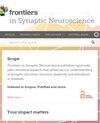Dexmedetomidine and Ketamine Attenuated Neuropathic Pain Related Behaviors via STING Pathway to Induce ER-Phagy
IF 4.1
4区 医学
Q2 NEUROSCIENCES
引用次数: 5
Abstract
Our previous work indicated that ER-phagy level had altered in spinal nerve ligation (SNL) rats. In this study, we investigated whether dexmedetomidine or ketamine exhibits anti-anxiety or anti-nociceptive effects via modulation of the spinal STING/TBK pathway to alter ER-phagy in SNL rats. We evaluated the analgesic and anti-anxiety effects of ketamine and dexmedetomidine in SNL rats. 2’3’-cGAMP (a STING pathway agonist) was administrated to investigate whether enhanced spinal STING pathway activation could inhibit dexmedetomidine or ketamine treatment effects in SNL rats. Analgesic effects were assessed with the mechanical withdrawal threshold (MWT) and anti-anxiety effects were measured via an open field test (OFT). Protein expression levels were evaluated by immunoblotting. Distribution and cellular localization of Grp78 (ER stress marker) were evaluated by confocal immunofluorescence. SNL induced mechanical hypersensitivity and anxiety in rats; dexmedetomidine and ketamine both provided analgesia and anti-anxiety effects in SNL rats. Furthermore, the STING pathway was involved in the modulation of ER stress and ER-phagy in SNL rats and dexmedetomidine and ketamine alleviated ER stress by inhibiting STING pathway to enhance ER-phagy. Thus, both ketamine and dexmedetomidine provided anti-anxiety and anti-nociceptive effects by alleviating ER stress through the inhibition of the STING/TBK pathway to modulate spinal ER-phagy in SNL rats.右美托咪定和氯胺酮通过STING途径诱导er吞噬减轻神经性疼痛相关行为
我们之前的研究表明,脊髓神经结扎(SNL)大鼠er吞噬水平发生了改变。在这项研究中,我们研究了右美托咪定或氯胺酮是否通过调节脊髓STING/TBK通路来改变SNL大鼠的er吞噬而表现出抗焦虑或抗伤害作用。我们评价氯胺酮和右美托咪定对SNL大鼠的镇痛和抗焦虑作用。我们给药2’3’-cGAMP(一种STING通路激动剂)来研究增强脊髓STING通路激活是否能抑制右美托咪定或氯胺酮对SNL大鼠的治疗效果。采用机械戒断阈值(MWT)评估镇痛作用,通过开放场试验(OFT)测量抗焦虑作用。免疫印迹法检测蛋白表达水平。共聚焦免疫荧光法检测内质网应激标志物Grp78的分布和细胞定位。SNL诱导大鼠机械超敏反应和焦虑;右美托咪定和氯胺酮对SNL大鼠均有镇痛和抗焦虑作用。此外,STING通路参与了SNL大鼠内质网应激和ER吞噬的调节,右美托咪定和氯胺酮通过抑制STING通路增强ER吞噬来减轻内质网应激。因此,氯胺酮和右美托咪定均通过抑制STING/TBK通路调节SNL大鼠脊髓ER吞噬,减轻内质网应激,具有抗焦虑和抗伤害作用。
本文章由计算机程序翻译,如有差异,请以英文原文为准。
求助全文
约1分钟内获得全文
求助全文
来源期刊

Frontiers in Synaptic Neuroscience
NEUROSCIENCES-
CiteScore
7.10
自引率
2.70%
发文量
74
审稿时长
14 weeks
 求助内容:
求助内容: 应助结果提醒方式:
应助结果提醒方式:


